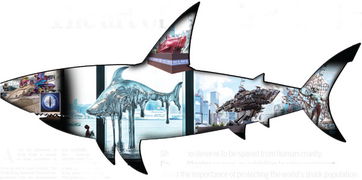Mastering the Art of Fishing: Tips and Techniques to Enhance Your Angling Skills
Fishing, an age-old pastime that transcends borders and cultures, is a cherished activity for many. Whether you're a seasoned angler or a beginner looking to cast your line into the unknown, mastering the art of fishing requires patience, practice, and a keen understanding of the basics. Here's a comprehensive guide to help you elevate your fishing skills to new heights.
Understanding the Basics
Before you can truly master the art of fishing, it's essential to grasp the fundamental concepts. This includes understanding the types of fish you're targeting, the equipment needed, and the basic techniques for casting, retrieving, and hooking.
Choosing the Right Equipment
The first step in mastering fishing is to select the appropriate equipment. Here's a breakdown of the key components:
Rod and Reel: The rod and reel combination is the backbone of your fishing setup. Choose a rod that is appropriate for the type of fish you're targeting and the conditions you'll be fishing in. The reel should match the rod and be designed for the type of fishing you plan to do.
Line: The type of line you use can greatly affect your fishing success. Monofilament, fluorocarbon, and braided lines each have their advantages and disadvantages. Research which type is best suited for your fishing environment.
Hooks: The size and type of hook you use depend on the fish you're after. Larger hooks are suitable for larger fish, while smaller hooks are ideal for smaller species.
Lures and Bait: The lure or bait you choose should mimic the natural prey of the fish you're targeting. This could be a plastic worm, a live bait, or a manufactured lure.
Casting Techniques
Casting is an essential skill for any angler. Here are some tips to improve your casting technique:
Practice: The more you cast, the better you'll become. Practice in open spaces to get a feel for the casting motion.
Balance: Hold the rod with a comfortable grip and maintain a balanced stance. This will help you control the casting motion.

Backcast: Start by making a backcast to give yourself a straight line for the forward cast. Ensure the line is taut and then bring the rod back to your shoulder or higher.
Forward Cast: As you bring the rod forward, your wrist should snap to propel the line forward. Aim to land the lure in the desired spot with a smooth, controlled motion.
Retrieving Techniques
Retrieving involves moving the lure or bait through the water to entice fish. Here are some retrieval techniques:
Trolling: Dragging a lure or bait through the water at a slow, steady pace. This technique is often used in deeper waters.
Jigging: Moving the lure up and down in the water column. This can be effective for fish that are suspended at different depths.
Dead Sticking: Simply holding the bait or lure in place without moving it. This technique can be effective for finicky fish.
Hooking Techniques
Once you've attracted a fish, the next step is to hook it effectively. Here are some tips:
Timing: Wait for the fish to take a natural bite before setting the hook. If you set the hook too early, you may lose the fish. If you wait too long, the fish may spit out the bait.
Setting the Hook: Once you feel a tap or a pull, quickly but smoothly set the hook. This can be done by pulling the rod tip down or to the side.
Reeling In: Once you've hooked the fish, reel it in steadily but don't apply too much pressure. This can cause the fish to become stressed or to break the line.
Understanding Fish Behavior
To become a master angler, it's crucial to understand the behavior of the fish you're targeting. This includes their feeding patterns, migration habits, and preferred habitats. Here are some tips:
Research: Learn about the species you're interested in catching. Understanding their behavior can help you determine the best time and place to fish.
Observe: Pay attention to the water conditions and the behavior of other fish. This can give you valuable clues about the presence of your target species.
Patience: Fish often bite when you least expect it. Stay patient and keep your eyes and ears open for signs of activity.
Advanced Techniques
Once you've mastered the basics, you can explore more advanced fishing techniques. This includes:
Fly Fishing: A challenging but rewarding technique that requires precise casting and knowledge of fly patterns.
Ice Fishing: Targeting fish through the ice in cold weather conditions. This requires specialized equipment and knowledge of fish behavior in cold water.
Saltwater Fishing: Fishing in the ocean or saltwater environments. This can involve targeting species like marlin, tuna, and redfish.
Safety and Ethics
Finally, it's important to remember safety and ethics when fishing. Always check local regulations, practice catch-and-release where appropriate, and ensure you have the necessary safety gear, such as a life jacket and a first-aid kit.
In conclusion, mastering the art of fishing is a journey that requires time, practice, and dedication. By understanding the basics, refining your techniques, and developing a deep knowledge of fish behavior, you can elevate your angling skills and enjoy the serene and rewarding experience that fishing has to offer. Happy fishing!












